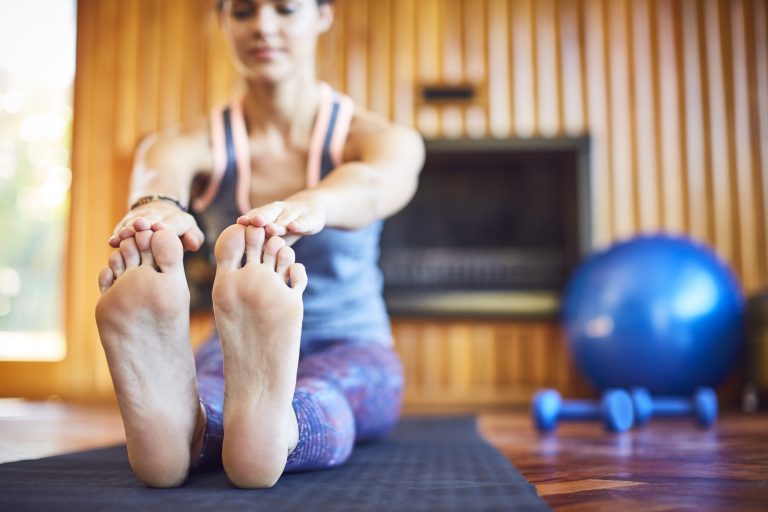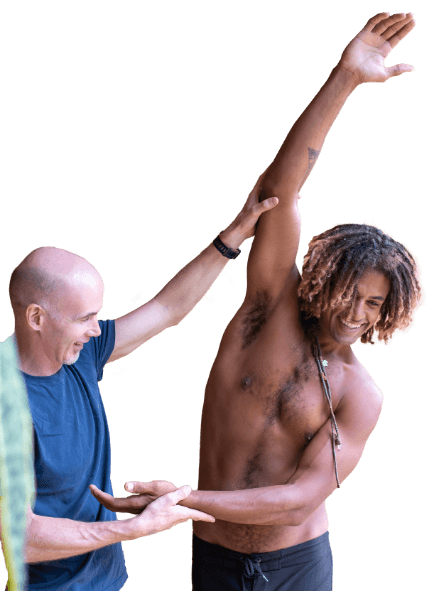
Every therapist’s favourite question…
It’s also a question I get asked by almost every client that I give an exercise to.
Most of my clients want to know how long they will have to do a certain exercise until they are either out of pain or stronger.
For my clients that have moved out of the pain phase they are generally wondering how long they will have to do an exercise program or daily practice before they start to see changes in muscle tone, definition, strength, endurance or flexibility.
So, we actually have a few questions here rolled into one. We need to define your goal or what you want to achieve before I can give you the best advice, but first let’s have a look at why exercises is useful.
How does exercise work to change the body?
No matter what exercise you choose to do there are some principles that underpin all the changes your body will go through. The main one is the SAID principle, or “Specific Adaptation to Imposed Demands”.
Put simply this principle states that when the body is subjected to stresses and overloads of varying intensities, it will gradually adapt over time to overcome whatever demands are placed on it.
The art in the science of exercise prescription is not to make the stress too small, which will mean the body won’t see the point of adapting. Or conversely, not to make the stress to big and overwhelm the body by not giving it time to adapt which will result in injury.
How quickly does the body change?
Interestingly the body will start to change just hours after one workout, but changes aren’t visible to the naked eye. The efficiency of your energy systems will start to change and there will be changes in your nervous system but all these will be lost if your workout was a one-off. It needs to be consistent for these changes to compound on each other.
It is well known by exercise physiologists that you will get stronger in as little as 3 workouts. This is because the brain learns to recruit more muscles fibres to produce greater force, a process called ‘neural activation’. These strength changes happen without a change in the muscle size. To prove this researchers in Japan (1) asked participants to perform 4 hard workouts a week. Although their muscles got stronger in the first 2 months they only got bigger after 3 months. Interestingly though, they also noted that when the participants stopped training the muscle size was the first thing to decrease, they were back to pre-training size within a month but the strength changes remained for longer, about 3months. If you go to the gym 3 times a week and aren’t performing intense exercises you can expect to see slower changes than reported in this study, it will probably be 6-8 months before you see a visible change in your muscle size.
How much exercise do you need?
This has been a topic of debate for decades in the fitness community. On one hand, there are government guidelines, for example at a minimum Canada suggests you should be doing 30 minutes of moderate activity 4 times a week. However when they study whether or not people are doing this they find that only about a third of people actually do it.
On the other hand, there are the hard core evolutionary biologists that suggest that our body is designed to move for hours a day, and that to get the most protection from nasty things like colon and breast cancer more exercise is better (2), with some researchers saying that it can reduce your risk by as much as 70% (3).
Is it possible to shorten the time spent exercising?
Interest is growing in the area of ‘High-Intensity Interval Training’ (HIIT) training. The idea behind this type of training is that endurance benefits can be gained with short bouts of intense exercises. Researchers in Canada (4) recruited participants to perform an all out 30 second cycle ride followed by rest for 4 minutes. They asked them to repeat this 4-6 times and repeat the entire work out 3 times a week. They compared the results to a control group who cycled an hour a day for 5 times a week. They showed that the gains in exercises capacity, muscle metabolism, and cardiovascular fitness were comparable between the two groups. Just to put that in perspective the HIIT group were getting the same benefits in 2-3 minutes of exercise as the ones who were cycling for an hour!
How does HIIT work?
As you can imagine studies like the one above led to an increase in research into the mechanisms of how HIIT works. It turns out that if you do HIIT workouts your muscles get more efficient at extracting the oxygen (for energy) for the bloodstream. This is in contrast to the changes in the more traditional aerobic endurance type exercises where the gains came from an increase in the amount of blood the heart can pump. So, the message is that you shouldn’t rely on HIIT training only, as you need an efficient heart just as much as you need efficient muscles. Therefore, to increase endurance and decrease fat you do need to mix it up a bit.
There is a small caveat to HIIT training though…you have to really push yourself, to do 30 seconds max all-out effort is hard. If you are starting HITT it might be easier to do a range of exercises for a higher amount of reps…here is a follow-along video to introduce you to HIIT training.
https://youtu.be/MA56hCpzeMs
What about rehab type exercises?
When helping someone recover from injury I prescribe exercises on a spectrum. For example, in my Back Pain Correction Protocol™ I start by evaluating where there are imbalances in the body. I then prescribe specific rehab exercises to start to address these imbalances. The reason for this is that we don’t want to train mobility or strength onto a joints that are imbalanced. This will just add to any problems, so it’s important to take a whole-body approach to back pain.
From there I ask people to do specific back exercises, this helps isolate out the back and ‘reconnect’ the brain to the specific muscles of the hips, lower back, pelvic floor and abdomen. These exercises mainly focus on coordination and relaxation. They don’t need to be done forever, and usually I ask people to stop doing them 3 times a week at about 4-6 weeks, especially if they no longer have symptoms.
However, this isn’t enough, the back doesn’t move in isolation, so the next step is integration with the rest of the body. This is where the exercises start to challenge the muscle’s endurance and strength. This can help teach the brain the difference between ‘dangerous’ movements, ones that might trigger pain, and functional or beneficial movements that might cause muscle soreness but ultimately make the back healthier. For an example of a HIIT work out for the lower back check this out.
https://youtu.be/NGOjX0hopWs
Finally, once a person is pain free, moving better and feeling stronger I ask them to do more whole-body exercises and really explore what their body is capable of, I call this part of the program ‘Liberate’. My main philosophy for exercises at this point is that they should be natural. That means if a caveman suddenly stepped out of time machine and saw you doing your workout, they should be able to recognize the movements. Things, like crawling, lifting, carrying and jumping, would be an appropriate exercise in this section.
Here are some great beginner natural movement exercises:
If you like this approach check out this short video on why traditional approaches to back pain just don’t work:
https://bpcp.edpaget.com/registration

Over the last 10 years Ed has been building a YouTube library to help people manage their own pain or movement limitations and increase performance through exercise. He regularly adds videos so be sure to subscribe and visit regularly


"Oh My Gosh- I am ALREADY feeling relief after a few days! I used to wake up 2-3 times a night with shooting pain that anti inflammatories couldn't touch. Now I have been waking up just because I want to notice what it feels like to lay in bed pain free- THANK YOU!."

"When I first started with your program I was experience a lot of pain. Walking was difficult. I had to stop and catch my breath every few minutes and lean against a wall for support. Now when I walk with my husband we go for over an hour. I never had to sit down and stop...and, hardly any pain!!! 😊😊 I can’t thank you enough."
Frustrated that you aren't recovering fast enough?
Discover how to heal from illness and injury using movement, food and lifestyle.
Leave a Reply